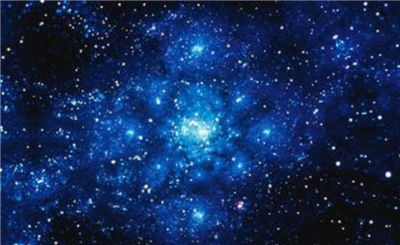Surprisingly little of the universe is visible to us when we incline our heads to the sky. Only about 6,000 stars are visible to the naked eye from Earth, and only about 2,000 can be seen from any one spot. With binoculars the number of stars you can see from a single location rises to about 50,000, and with a small two-inch telescope it leaps to 300,000.
令人吃惊的是,当我们把脑袋探向天空的时候,我们只能看见宇宙的极小部分。从地球上,肉眼只能见到大约6 000颗恒星,从一个角度只能见到大约2000颗。如果用了望远镜,我们从一处看见的星星就可以增加到大约5000颗;要是用一台5厘米的小型天文望远镜,这个数字便猛增到30万颗。

With a sixteen-inch telescope, such as Evans uses, you begin to count not in stars but in galaxies. From his deck, Evans supposes he can see between 50,000 and 100,000 galaxies, each containing tens of billions of stars. These are of course respectable numbers, but even with so much to take in, supernovae are extremely rare.
假如使用像埃文斯使用的那种40厘米天文望远镜,我们就不仅可以数恒星,而且可以数星系。埃文斯估计,他从阳台上可以看到的星系可达5万-10万个,每个星系都由几百亿颗恒星组成。这当然是个可观的数字,但即使能看到这么多,超新星也是极其少见的。
A star can burn for billions of years, but it dies just once and quickly, and only a few dying stars explode. Most expire quietly, like a campfire at dawn. In a typical galaxy, consisting of a hundred billion stars, a supernova will occur on average once every two or three hundred years.
一颗恒星可以燃烧几十亿年,而死亡却是一下子的事儿。只有少量的临终恒星发生爆炸,大多数默默地熄灭,就像黎明时的篝火那样。在一个由几千亿颗恒星组成的典型星系里,平均每二三百年会出现一颗超新星。
Finding a supernova therefore was a little bit like standing on the observation platform of the Empire State Building with a telescope and searching windows around Manhattan in the hope of finding, let us say, someone lighting a twenty-first-birthday cake.
因此,寻找一颗超新星,有点像立在纽约帝国大厦的观景台上,用望远镜搜索窗户外的曼哈顿四周,希望发现--比如说--有人在点着21岁生日蛋糕上的蜡烛。











